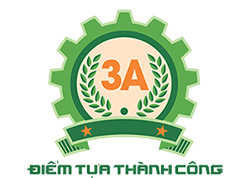ICP-OES equipment
ICP-OES (Inductively coupled plasma – optical emission spectrometry) is a technique in which the composition of elements in (mostly water-dissolved) samples can be determined using plasma and a spectrometer. The technique has been commercially available since 1974 and thanks to its reliability, multi-element options and high throughput, it has become a widely applied in both routine research as in more specific analysis purposes.
Bạn đang xem: Icp oes là gì
The GI and the spin-off company B-WARE having two ICP-OES systems; iCAP 6000 (Thermo Fischer Scientific, Bremen, Germany), and the high-end system ARCOS (Spectro Analytical, Kleve, Germany)
Principle
The solution to analyze is conducted by a peristaltic pump though a nebulizer into a spray chamber. The produced aerosol is lead into an argon plasma. Plasma is the forth state of matter, next to the solid, liquid and gaseous state. In the ICP-OES the plasma is generated at the end of a quarts torch by a cooled induction coil through which a high frequency alternate current flows. As a consequence, an alternate magnetic field is induced which accelerated electrons into a circular trajectory. Due to collision between the argon atom and the electrons ionization occurs, giving rise to a stable plasma. The plasma is extremely hot, 6000-7000 K. In the induction zone it can even reach 10000 K. In the torch desolvation, atomization and ionizations of the sample takes place. Due to the thermic energy taken up by the electrons, they reach a higher “excited” state. When the electrons drop back to ground level energy is liberated as light (photons). Each element has an own characteristic emission specttuongthan.vnm that is measured with a spectrometer. The light intensity on the wavelength is measured and with the calibration calculated into a concentration.
Xem thêm: About Nghĩa Là Gì ? About Nghĩa Là Gì Trong Tiếng Anh

ICP-OES ICAP The ICAP 6000 (Thermo Fisher Scientific) is equipped with a vertical torch and a radial plasma observation. With this configuration the ICAP can measure robust, reliable and heavy matrices. The detection limits are normally in the higher ppb (µg/L) range. For the detection the ICAP uses mirrors and a prism to measure the light on one CCD chip.
Xem thêm: Trước Công Nguyên Và Sau Công Nguyên Là Gì Và Trước Công Nguyên Có Bao Nhiêu Năm
ICP-OES ARCOSThe ARCOS (Spectro Analytical) is the ICP-OES of B-WARE Research Centre; if the ARCOS has an added value compared to the ICAP the insttuongthan.vnment can also be used for FNWI. The ARCOS can change the plasma configuration from vertical to horizontal, and can so change the plasma observation from ttuongthan.vne radial to ttuongthan.vne axial. The detection limits are varying by plasma configuration, matrix and elements that are measured, but in each case they are in the low ppb (µg/L) to high ppt (ng/L) range.
The light of the plasma is measured in the Rowland Circle Optics the light is spread without a prism, so that the wavelength fall on 32 CCD chips. With the ARCOS the following elements can be determined:

Details
ICAP
ARCOS
Torch Position
Vertical
Vertical or Horizontal
Plasma Observation
Radial
Radiaal or Axial
Detection
Mirrors Prism 1 CCD chip
Rowland Circle No Prism 32 CCD chips
Measuring range
High ppb level
Low ppb to high ppt level
Nebulizer
Cyclon
Seaspray or Crossflow
Extras
-also halogens are possible
-organic solutions are no problem
For heavy matrices: -Additional Argon Supply -Argon humidifier
Sample preparation – how to deliver samples
Samples should be delivered in 12 – 15 ml tubes. Samples should be acidified (preferably with 1-5 % HNO3in order to keep metals in solution) The content of salts in samples should be kept below 3%, preferably below 2% (= 20 g/l) Solid material should be desttuongthan.vncted, preferably with nitric acid only (concentration HNO3below 10%, ideally 1%), or if necessary with HNO3/H2OThis step can be performed as a closed desttuongthan.vnction in a microwave-oven. HCl can cause precipitates and the sulfur in sulfuric acid interferes in the analysis. The torches present at the GI are not resistant to HF. For the ICAP samples should not contain any organic solvents. Indicate as far a possible what concentration level may be expected in the samples FNWI uses mainly the ICAP, for the ARCOS contacted Sebastian
Samples should be delivered in 12 – 15 ml tubes. Samples should be acidified (preferably with 1-5 % HNO3in order to keep metals in solution) The content of salts in samples should be kept below 3%, preferably below 2% (= 20 g/l) Solid material should be desttuongthan.vncted, preferably with nitric acid only (concentration HNO3below 10%, ideally 1%), or if necessary with HNO3/H2OThis step can be performed as a closed desttuongthan.vnction in a microwave-oven. HCl can cause precipitates and the sulfur in sulfuric acid interferes in the analysis. The torches present at the GI are not resistant to HF. For the ICAP samples should not contain any organic solvents. Indicate as far a possible what concentration level may be expected in the samples FNWI uses mainly the ICAP, for the ARCOS contacted Sebastian
